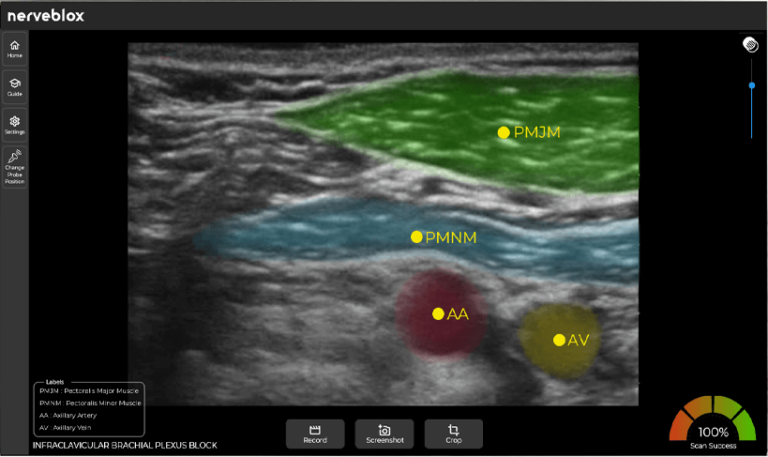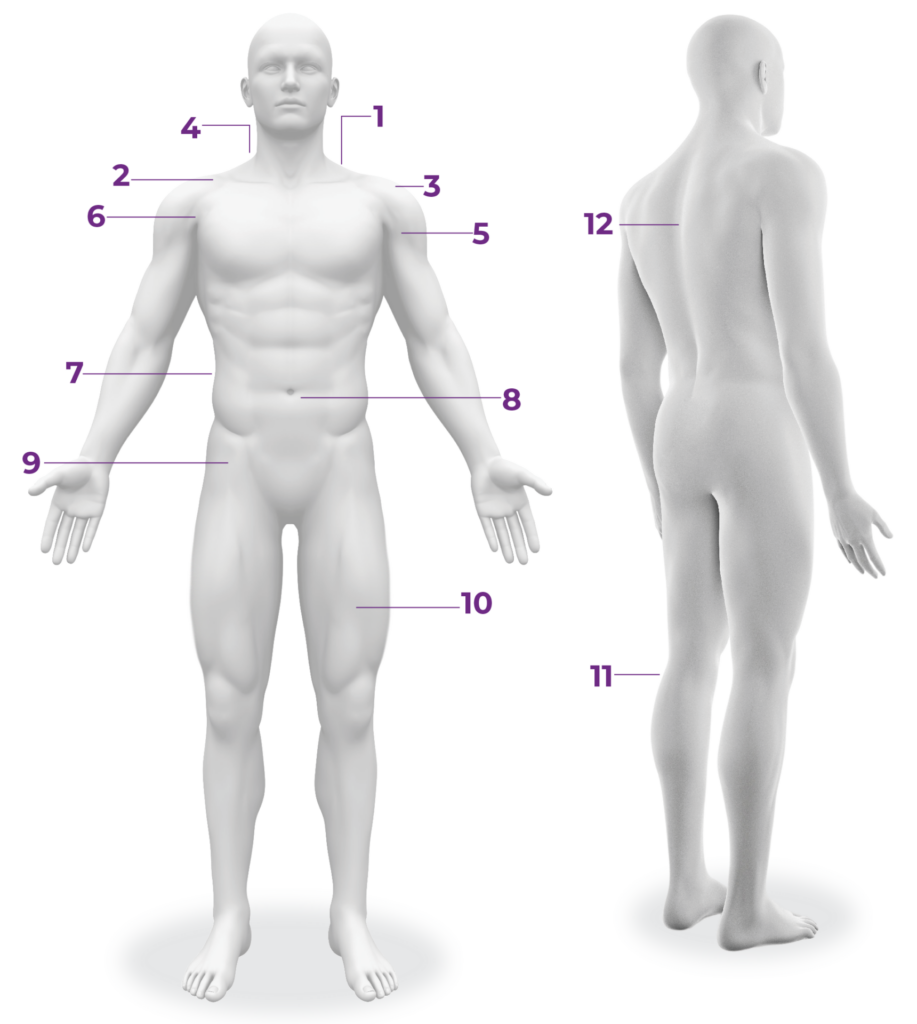Anesthesia &
Pain Medicine
Owning this surprising bit of technology at your clinic will make sure that you have the most unique regional anesthesiology experience to date.
Owning this surprising bit of technology at your clinic will make sure that you have the most unique regional anesthesiology experience to date.
Nerveblox is a CE-marked, AI-enabled ultrasound guidance software to assist anesthesiologists with sonoanatomy.

Nerveblox makes ultrasound images colorful and easily interpretable. The AI at the heart of it gives anesthesiologists extra confidence while performing ultrasound-guided peripheral nerve blocks. It assists physicians in quickly interpreting ultrasound images by auto-labeling decisive anatomical landmarks at each block region.
Regional anesthesia is transforming in time thanks to advancements in technology.
In the beginning, physicians were performing basic anatomical techniques. The variety of block types was limited, and the associated complication rates were arguable.
Then, an electric stimulator was introduced to localize the nerve more accurately which definitely increased block success and the number of accepted block types.
Within the last decade and with the increasing accessibility of ultrasound systems, ultrasound-guided peripheral nerve blocking emerged and resulted in fewer complications and broader use-cases than its predecessors.
Finally, the age of artificial intelligence-guided nerve blocks has arrived.
What is Nerveblox?
Nerveblox is an AI-driven decision support solution to help anesthesiologists practice peripheral nerve block (PNB) faster.
Nerveblox is able to capture real-time images from any ultrasonography (US) device. The captured images are then processed by state-of-the-art artificial intelligence algorithms, and the key anatomical landmarks are automatically labelled for the user. All you have to do is plug Nerveblox into any compatible ultrasound device.
Today, Nerveblox supports the following peripheral nerve block (PNB) types:

